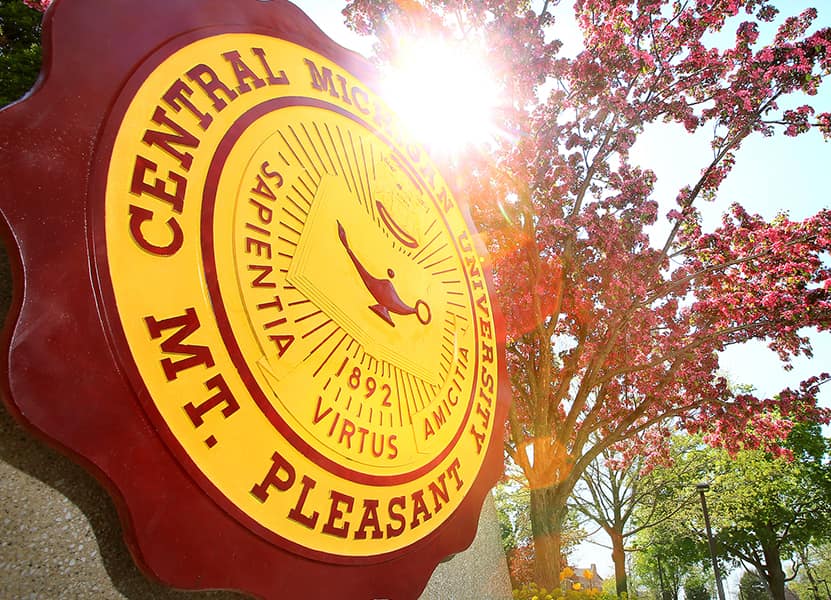The collection was process by different groups of student processors over years. Series 1 Papers, 1833, 1976, undated, 3.5 cubic ft. (in 7 boxes, 2 Ov. v.); Series 2 Papers, 1833, 2009, undated, 6.5 cubic ft. (in 13 boxes, 3 Ov. v.).
Series 2 includes materials mostly in English, but some are in German or Russian, which is noted in the Box and Folder Listing.
In Series 2 notable correspondence includes Rep. J.W. Fordney, Governor Chase S. Osborn, President Herbert Hoover and letters and Christmas cards to and from World War II servicemen. Material also covers Reuben Hitchcock Morley’s murder in China, the city of Saginaw, various institutions within the city and other companies owned by Morley relatives in the United States. Newspaper clippings (copies) include articles related to Saginaw, the Morley Brothers, the fire of 1934 and the Morley Family.
There are photographs in Series 2 Box 4 of the Morley Brothers at DuMont Television, an early manufacturer of televisions.
Personal Correspondence of various family members is found in Series 2 Boxes 5-10. Of note here are charming, homemade notes to Santa created by children Abigail, Charles, Mary and Paul Morley, Jr., undated. The notes are handwritten or printed, signed, on red cardboard and decorated with drawings and stickers.
Series 2 Box 6 includes correspondence between Paul Morley and the British Embassy, 1916.
Series 2 Box 8 includes correspondence from between P.F.H. Morley and the editor of the Horseless Age, the “first Motor Vehicle Journal in the English language.” Correspondence notes that Morley had troubles with his gasoline engine and inquired about a fuel source called “energine”. In Box 8 there is also correspondence between Paul Morley recommending possible donors to support The National Home Finding Society for Colored Children (copies, originals), 1916. Correspondence in Box 8 about the New York Times is about the purchase of a subscription for Fred Ecton and complaints about a late paper.
Series 2 Box 11 includes materials of the Menominee Hardware Company which was either owned or co-owned by the Morleys. Box 11 also includes correspondence between the Morley Brothers and the U.S. War Department, 1919, noting how they are trying to hire veterans, and War Department requests for Morley to complete a questionnaire re: company war efforts. It appears that they supplied war products.
Series 2 Box 12 includes Morley Brothers Patents, 1886-1956. Several of these patents were purchased by the Morleys, while the rest of the folders concerns trademarks.
Series 2 includes one Oversized Folder with a Goodridge Bros. photograph of a house with four children, a man and a horse. The photographers, notable African-Americans, are identified on the back of the image.
Series 2 Processing Note: During processing approximately 5 cubic feet of materials, mostly duplicates or materials which were copied and the copies retained, were withdrawn from the collection. In addition, approximately 2 cubic feet of general Saginaw history materials, general Michigan photographs and postcards were added to the Michigan vertical files, Michigan photographs or Michigan postcards collections in the Clarke. Published materials of a substantial nature in both series were separately cataloged.
Biography:
George W. and Edward W. Morley came to East Saginaw, Michigan, from Painesville, Ohio. They entered the hardware business, specializing in lumber tools, with Anton Schmitz. Schmitz sold his company to the Morley brothers upon his death. In 1882, the Morley Brothers opened a new retail and wholesale store believed to be one of the largest structures ever built in the United States. It consisted of four stories of iron, brick, and plate glass totaling over 100,000 square feet. The business sold hardware supplies, farm implements, lumbering tools, and household goods. It became the second largest hardware, wholesale and retail concern in the nation.
In 1933, Morley supplied $500,000 to the city of Saginaw to meet its payroll during the Great Depression. This generous act of Morley saved the city from bankruptcy. The hardware and retail warehouse caught fire in 1949, which cost half a million dollars in damages and was one of the most destructive fires in Saginaw history. However, Morley rebuilt and continued to expand from Saginaw to Detroit and Grand Rapids, Michigan. The Royal Oak branch was built in 1955 to replace former offices and warehouse buildings of Morley Brothers. The building covered 132,000 square feet and stock included floor coverings, housewares, hardware, and sporting goods. Opened in 1933, the Grand Rapids branch contained two buildings for the storage of home goods and RCA victor and Whirlpool appliances. (This information is from: Morley, R.C, E.B Morley, Burrows Morley. ‘Morley Brothers: from the sawdust Saginaw to the soaring age.’ (Firm, Saginaw, Mich.) and Morley. Our History. http://www.morleynet.com/morley-companies-history.html)
Paul F. H. Morley was Edward's son. For information on him and his family see The Log of the lodge, 1909, 2006 catalog record.
Reuben H. Morley, Paul's brother, was presumed murdered in China in 1905 at the age of 29 by a Frenchman traveling under an alias. The family enlisted help from its political and press connections, and Paul traveled to France to meet with French police. Reuben's body was never found.
The company continues to exist today, although it specializes now in travel and training.
